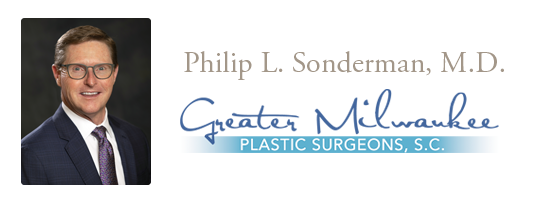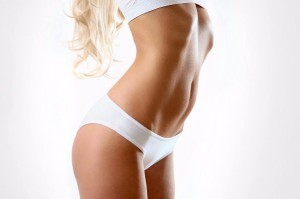 Liposuction is an outpatient procedure which removes excess fat deposits that cause localized bulges in various areas of the body. Through the use of various techniques, the body can be contoured by removing bulges to blend body outlines more aesthetically. Insurance does not cover this procedure.
Liposuction is an outpatient procedure which removes excess fat deposits that cause localized bulges in various areas of the body. Through the use of various techniques, the body can be contoured by removing bulges to blend body outlines more aesthetically. Insurance does not cover this procedure.
Suction lipoplasty or liposuction removes excess localized fat deposits which cause localized bulges in various areas of the body. Through a tiny incision, small tubes or cannulas are used to suction away the fat deposits.
Suction lipoplasty is not designed as a weight reduction procedure. It is a contouring procedure which removes bulges to blend body outlines more aesthetically.
Fat deposits can cause localized bulges in the face and neck, upper arms, upper and lower abdomen, flank areas (love handles), inner thighs, outer thighs (saddlebags), buttocks, and knee areas and calves.
Liposuction FAQs
What can I expect after surgery?
What are the stages of recovery?
-
What does liposuction do?
There are two layers or compartments of fat on your body. There’s a superficial layer which has an even thickness over most of the body and deep compartments which exist mainly in the areas mentioned above. If you are not overweight, but have a localized bulge in these areas, then you have excess fat in the deep compartment. Deposits of deep compartment fat are hereditary and usually do not respond to diet and exercise. On the other hand, superficial compartment fat increases significantly with weight gain and decreases with weight loss. Suction lipoplasty primarily removes deep compartment fat deposits to remove bulges.
The quality and elasticity of the overlying skin has a major impact on the success of suction lipoplasty. When fat is suctioned to remove a bulge, the overlying skin must shrink or contract to fit the new profile. If your skin is excessively loose before the procedure, the additional looseness after suctioning may be undesirable. Dr. Sonderman will discuss the elasticity of your skin with you during your consultation.
Although there is no absolute age at which the skin becomes too loose for the procedure, after age 45-50 (or occasionally sooner), the elasticity of the skin decreases in most patients.
To be a good candidate for suction lipoplasty, you should have localized fat deposits (not be grossly overweight) and elastic skin overlying the fat deposits.
-
Are there any limitations?
Suction lipoplasty does not significantly reduce your body weight – it is intended to improve the contour in the areas suctioned.
When fat is removed from beneath the skin, the skin can become looser. The degree of looseness depends on the elastic qualities of your skin before surgery and the amount of fat removed during surgery.
The amount of fat which can be removed depends on the amount present in each deposit. It is important to leave a thin layer of normal fat beneath the skin to prevent rippling or dimpling of the skin surface. Suctioning only removes fat. A bulge due to muscle or bone will not be removed.
A rippled or “cellulite” appearance of the skin prior to suction will not be eliminated by this procedure. It is possible to see small areas of skin rippling, dimpling, or contour irregularities following suction lipoplasty.
You will see an immediate contour change, but you’ll have some swelling, bruising, and numbness over the areas which have been suctioned. The swelling and bruising usually resolves in 4-5 weeks or sooner. You’ll notice sensation starting to return (if it was decreased) in about two weeks. It may take up to several months for the sensation to become completely normal.
-
What are the possible risks?
Risks common to all surgical procedures such as bleeding, infection and scar tissue formation occur in a very small percentage of cases. We’ll give you more detailed information about these and other rare risks during your consultation and encourage you to discuss your concerns with Dr. Sonderman.
-
Tell me about the operation…
Before your suction lipoplasty, Dr. Sonderman will carefully outline the areas of bulging which are to be suctioned. He’ll draw detailed contour lines to further define the shape and contour characteristics of the fat deposit.
Tiny incisions, usually less than a half inch long, are made in concealed areas and small suction tubes are inserted to the proper depth of the fat deposits. The tube or cannula is passed back and forth until an appropriate amount of fat has been removed. It’s then moved over about a half inch and several passes are made until fat is removed. The entire bulging area is treated in this fashion, carefully removing small amounts at a time, while constantly checking fat thickness and contour as suctioning proceeds.
After suctioning is complete in one area, the opposite side is treated in the same way. The two sides are compared and contours adjusted for the best match. Finally, the incisions are carefully closed and an elastic garment or dressing is placed on the skin to give gentle pressure and prevent excess fluid accumulation in the suctioned area.
-
What can I expect after surgery?
Your incisions will be carefully closed with stitches placed beneath the skin. This results in very fine scars instead of “railroad track” type. You will be able to shower and bathe immediately. None of the sutures will have to be removed, they simply dissolve.
Following suction lipoplasty procedures, most patients experience nuisances such as tightness and fullness, but have very little pain.
You may develop slight bruising in the treated areas which will gradually decrease over 2-3 weeks, depending on your tissue characteristics. We will prescribe medication if you have a moderate feeling of soreness. Most patients require medication for only 2-3 days.
-
What are the stages of recovery?
Usually, our patients want to know about four stages: (1) hospitalization time, (2) when swelling or bruising will lessen, (3) when they will be able to return to work or social activity, and (4) when they can return to full aerobic or strenuous exercise. The average for suction lipoplasty procedures are:
- o Hospitalization timeis minimal. For outpatient surgery, you’ll be in and out of the hospital the same day.
- Bruising and swelling lessens in 4-5 weeks.
- Patients often return to work and social activity in 1-2 weeks.
- Patients often return to aerobic or strenuous exercise in 4 weeks.
Depending on how many areas were treated, we encourage immediate return to full normal activity within 1-2 weeks. But, do not do any type of strenuous exercise that will push your pulse over 100 for the first week. This type of activity increases your blood pressure and may result in bleeding.








